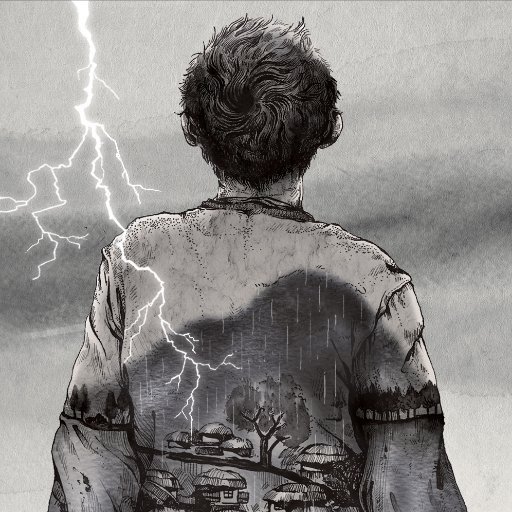Historical fiction is a genre that provides readers with fun from all angles, and that is especially true for historical manga. The genre is like a partially-painted canvas that comes already detailed with lore and language and aesthetics (architecture, costumes, inventions, traditions, and more).
But using that canvas, authors and creators can layer whatever they want on it. They can be true to the history books and retell legendary sagas, or they can infuse these tales with supernatural and mythological elements. They can write in new peoples and places, if they want to.

Must-Read Historical Manga
Here, you’ll find a mix of those two approaches to historical manga. Some of these are grounded, historically accurate tales. Others are fantastic, but still grounded in specific time periods and locations. These are the best historical manga on the shelves right now, and they’ll take you from Edo Japan to Viking England and far beyond.
Hell’s Paradise: Jigokuraku by Yuji Kaku
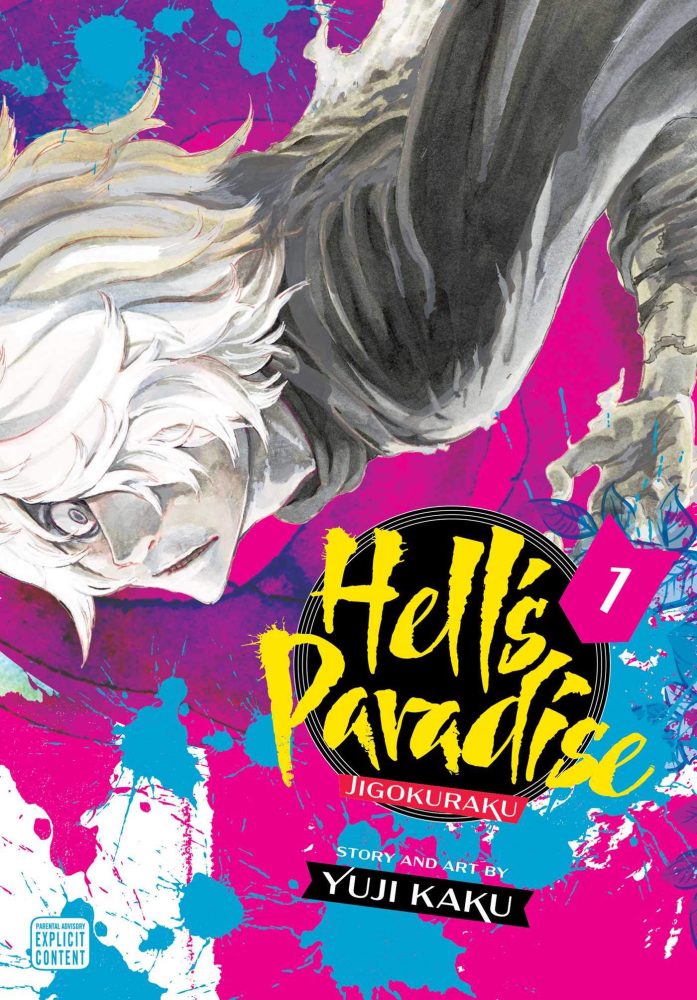
There’s no manga in the world like Hell’s Paradise, and no creator quite like Yuji Kaku. His art has the power to drop jaws time and time again, and Hell’s Paradise is a one-of-a-kind historical manga. The fact that it’s also a shonen manga means you’re getting plenty of raw action, fantastical creature design, cartoonish character writing, and a high stakes plot.
This stunning manga is set at the tail end of Japan’s Edo period and our protagonist, Gabimaru the Hollow, is a young, merciless, ninja of legendary skill; a member of the Iwagakure clan. When the story begins, Gabimaru has his head on the executioner’s block. The executioner in question is a woman named Sagiri of the Yamada Asaemon clan of samurai executioners.
Luckily for Gabimaru, Sagiri offers him an ultimatum: a pardon for his crimes and a life of freedom in exchange for a dangerous mission on behalf of the shogun. The mission will take Gabimaru and Sagiri to an uninhabited island off the southwest coast of Japan. This island is rumoured to be Shinsenkyo, a fabled paradise.
However, almost everyone who has set foot on the island has never returned. Those who have are monstrously changed into half-dead things, with flowers and branches sprouting from their bodies. Hell’s Paradise is a blend of historical manga and fantasy manga, with an emphasis on the fantastic. But what makes it fun for history buffs is its attention to historical detail.
Master translator Caleb Cook has done his best with this one. And at the end of each volume, we are given a page full of facts related to the history, culture, and language found within the manga.
Vinland Saga by Makoto Yukimura
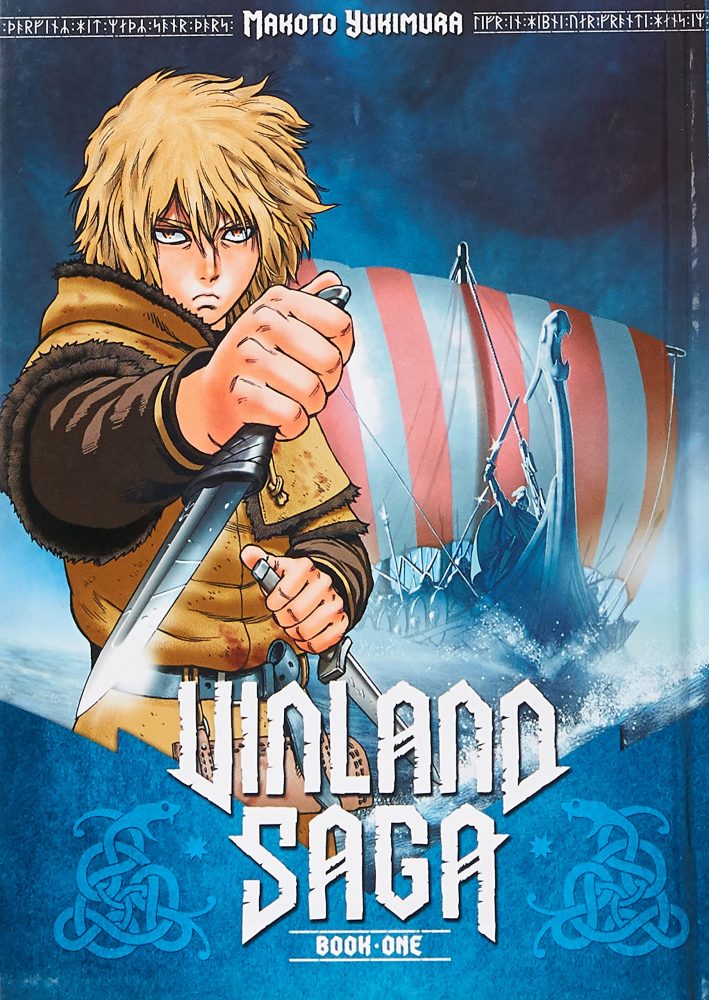
Makoto Yukimura’s Vinland Saga is arguably the definitive historical manga. When you dig down into the genre, this series will be right on the surface. And for good reason! When you think “viking” you think “epic” and that is exactly what Makoto Yukimura delivers with Vinland Saga: a sweeping historical epic of staggering proportions.
Vinland Saga takes us across the Viking world of Northern Europe (mostly England), and we see this world and its events through the eyes of heroes and villains, where the lines between the two are blurred. There is rarely a moral, thematic, or even emotionally consistent throughline in the Vinland Saga manga. The complex actions of its complex characters surprise us constantly.
There are contradictions, betrayals, moments of growth, and satisfaction never found. This is what makes the world and the narrative of the Vinland Saga manga such a rich and textured one. Characters like Thorfinn and Askeladd (our initial hero/villain pair) do not feel as though they exist to service the plot or satisfy the readers’ need for resolution. They are too busy living, fighting, winning, and losing.
Historical details can be found constantly in the visual design (costumes, weapons, ships, architecture, and landscapes) as well as the lore (years, kings, heroes, and events). Fans of grand adventures, bloody battles, historical details, morally grey characters, and breathtaking art need to read Vinland Saga: perhaps the finest historical manga ever written.
Read More: Books on Mythology and Folklore
Descending Stories: Showa Genroku Rakugo Shinju by Haruko Kumota

Here is a historical manga that’s an absolute must-read for those looking to understand more about traditional Japanese art forms, as well as those looking for a beautifully crafted drama. The rakugo in the title is the art in question: a traditional Japanese form of comedic storytelling. The great artists of this form are masters of oration, tone, pace, and timing.
Our protagonist, Kyoji, is a young man who has just been release from prison and has no prospects, nothing to his name, no hope for the future. One thing Kyoji does have is a dream: to study under the great rakugo master Yakumo Yurakutei VIII, a man who is famous for declining to take on apprentices.
Something in our protagonist causes him to change his mind, however, and so he takes Kyoji on as his apprentice, naming him Yotaro (the fool). In true drama fashion, we flash back often to the previous lives of our protagonists and what brought them to this point, while also moving forward slowly from apprenticeship to success story.
Descending Stories: Showa Genroku Rakugo Shinju is a historical manga that celebrates the art of storytelling, and tells us its own intimate story of drama and tradition; the old vs the new.
Vagabond by Takehiko Inoue
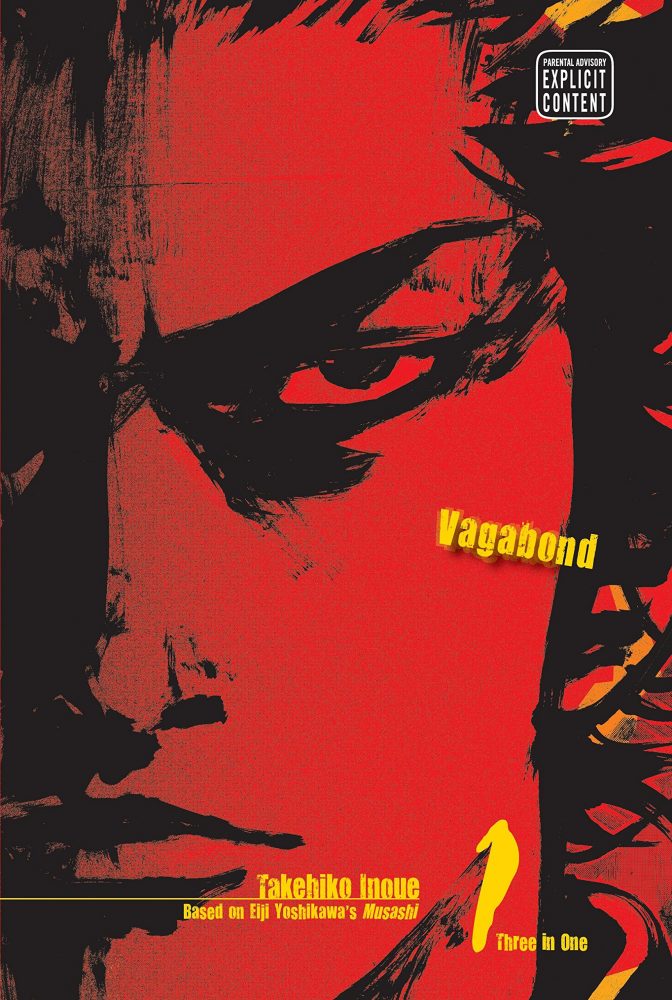
Takehiko Inoue is probably best-known for being the creator of beloved and hugely popular shonen sports manga Slam Dunk. His follow-up historical manga Vagabond is a very different beast indeed. In fact, much like when a band dramatically changes its sound between albums, it almost beggars belief that these two manga were created by the same mangaka. The whiplash between the two is staggering.
based on Eiji Yoshikawa’s novel Musashi, Vagabond is a slow-burn historical manga set during Japan’s 17th Century, at the tail end of the Sengoku Jidai. And so we begin at the end (of the Sengoku period), after the decisive and legendary Battle of Sekigahara (which led to the rise of the Tokugawa shogunate, beginning with shogun Tokugawa Ieyasu).
During the battle, two teenage boys who had fought for the losing side have narrowly managed to survive, and we start our epic journey with them bruised but hanging on to life. After sheltering with a houseful of kind women and surviving a vicious attack, the two young men separate and our protagonist, Takezō Shinmen decides to become a wandering vagabond.
After returning home, being branded a criminal, and surviving deadly pursuers, Takezō is renamed Musashi Miyamoto, and from here we follow his journey to becoming a legendary Japanese swordsman. For anyone who loves Japanese history (especially the sword-swinging, honour-bound samurai kind), Vagabond is an essential historical manga.
Read More: Adult Manga for Mature Readers
Golden Kamuy by Satoru Noda
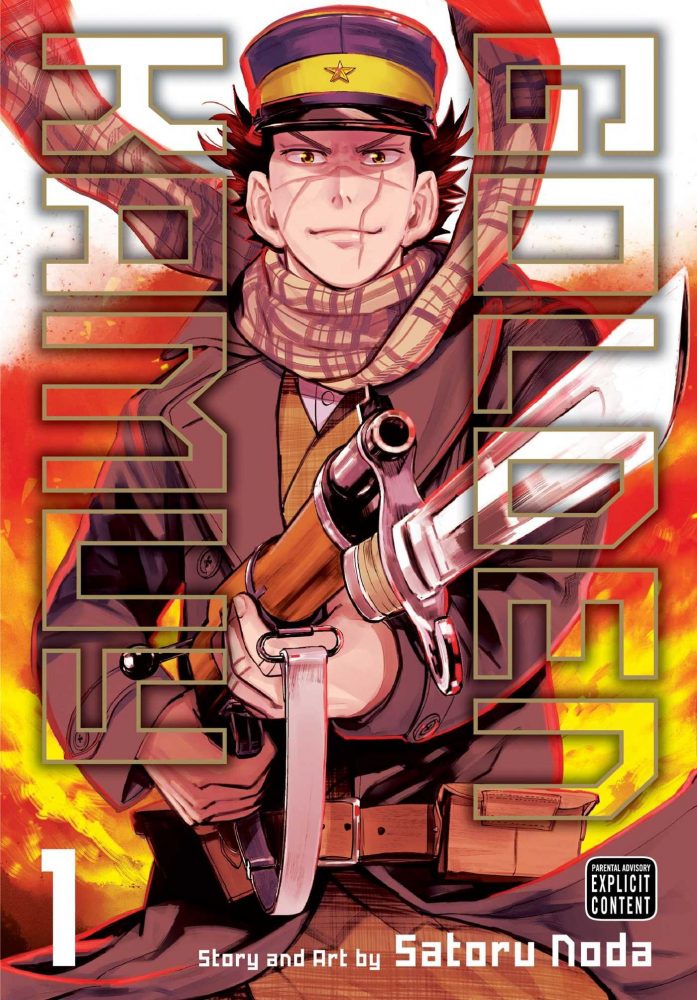
Set in the early 20th Century on Japan’s northernmost island of Hokkaido, Golden Kamuy is a rip-roaring action adventure, and an extremely good historical manga to boot. The crux of Golden Kamuy‘s plot is this: a Russo-Japanese War veteran named Saichi Sugimoto teams up with a local Ainu girl, Asirpa, as well as an assorted group of soldiers and ex-convicts to locate a stolen hoard of Ainu gold.
There’s plenty of detailed violence and bloodshed to satisfy readers looking for some intense action from their seinen manga, but this tale also has one of the best female protagonists in all of manga. Aspira is a fan favourite, beloved for her skills and savvy. It’s also refreshing to see an Ainu take the spotlight in a manga; we need more Ainu representation in Japanese media!
Golden Kamuy also teaches readers plenty about Hokkaido, about the Russo-Japanese war, and about survival in the wild. It’s as informative as it is brutal and blood-soaked. Memorable characters, a simple and focussed plot, and plenty of historical details make Golden Kamuy a must-read historical manga.
In This Corner of the World by Fumiyo Kouno
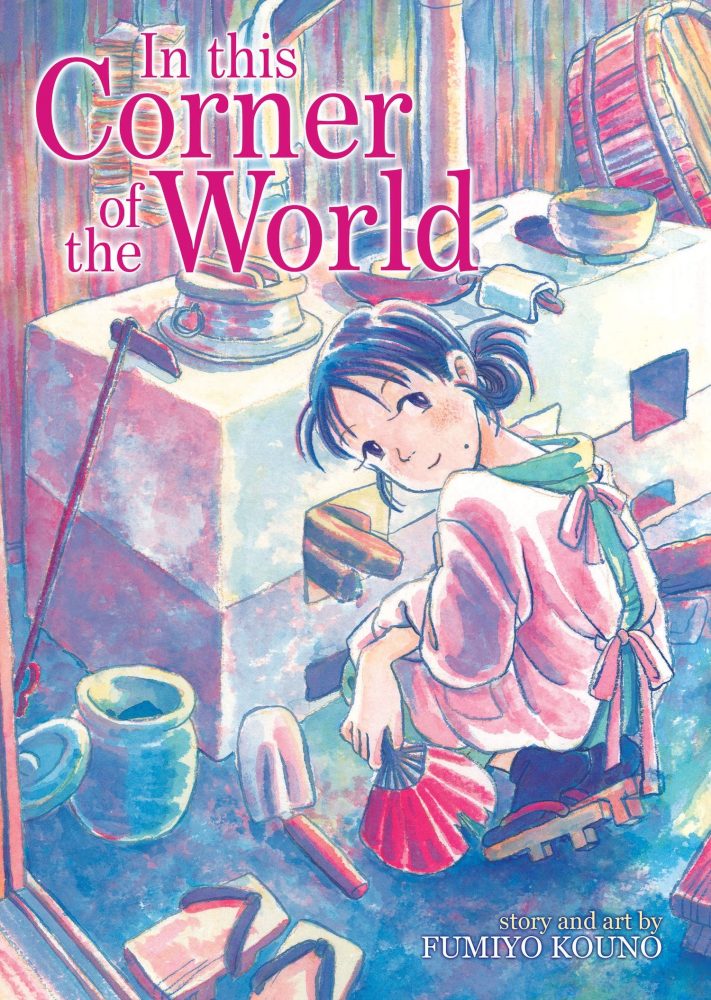
In 2016, this historical manga series was adapted into an anime movie of the same name, and was a big hit. If you’ve seen the film, definitely check out the manga as well. Spanning just three volumes that will stay with you forever, In This Corner of the World tells a story of World War II from the perspective of an ordinary, innocent Japanese person.
Our protagonist is Suzu, a talented young artist living in Hiroshima. When a young naval officers professes his love and proposes, she accepts and moves in with his family in the port city of Kure. But war looms, closes in, and then is upon them. And given the manga’s setting and what we know of history, we fear for Suzu and her loved ones from page one of the manga.
The fact that Suzu is an innocent woman, and a painter who creates beauty from nothing, is particularly poignant against this backdrop of destruction, domination, and bloodshed. Seeing World War II play out from her perspective is moving and humbling. More historical manga should be written with this same depth of nuance and humanity.
Read More: Books Set in World War II
Demon Slayer by Koyoharu Gotouge
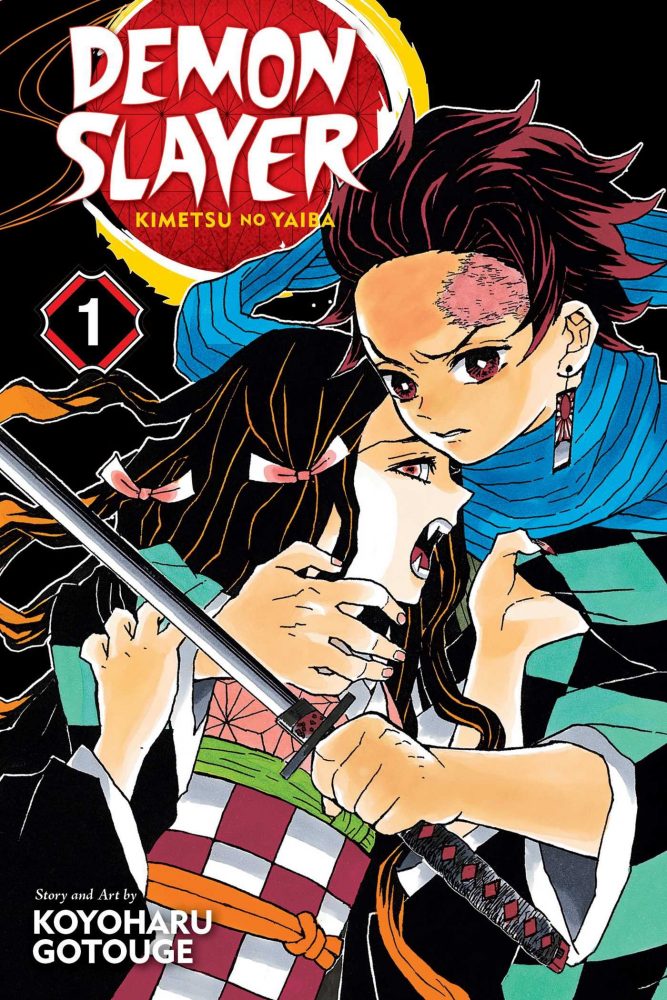
Demon Slayer took the manga and anime worlds by storm, capturing hearts, climbing to the tops of bestseller lists, and turning innocent people into diehard anime and manga fans. But this powerful and excellent shonen manga is also a very good historical manga. It takes plenty of liberties, with its titular focus being on slaying demons, but it still celebrates a particular period in Japanese history.
Demon Slayer takes place during the relatively short-lived Taishō era of Japan, between 1912 and 1926. It was a time of change, with the introduction of cars, electricity, and Western fashion. Our protagonist, Tanjiro, is a country boy who grew up in the snowy mountains with his family. As such, he wields a sword and wears his hair long. He knows little about modern city living.
This aspect of Demon Slayer is a small one but it features into every arc in some way, even just aesthetically. This is the same time period that, in American fiction, is awash with romantic imagery of cowboys. Demon Slayer is similar in many ways. Like with Western fiction, you have walks down dusty roads, rowdy and seedy city neighbourhoods, and showdowns on steam trains. Demon Slayer is more cowboy than it first appears.
If you enjoy the aesthetics of the 1920s, especially in Japan, you’ll love the way Demon Slayer looks and feels. As shonen manga go, it’s an awesome historical manga, too.
Read More: Essential Sci-fi Manga
The Elusive Samurai by Yusei Matsui
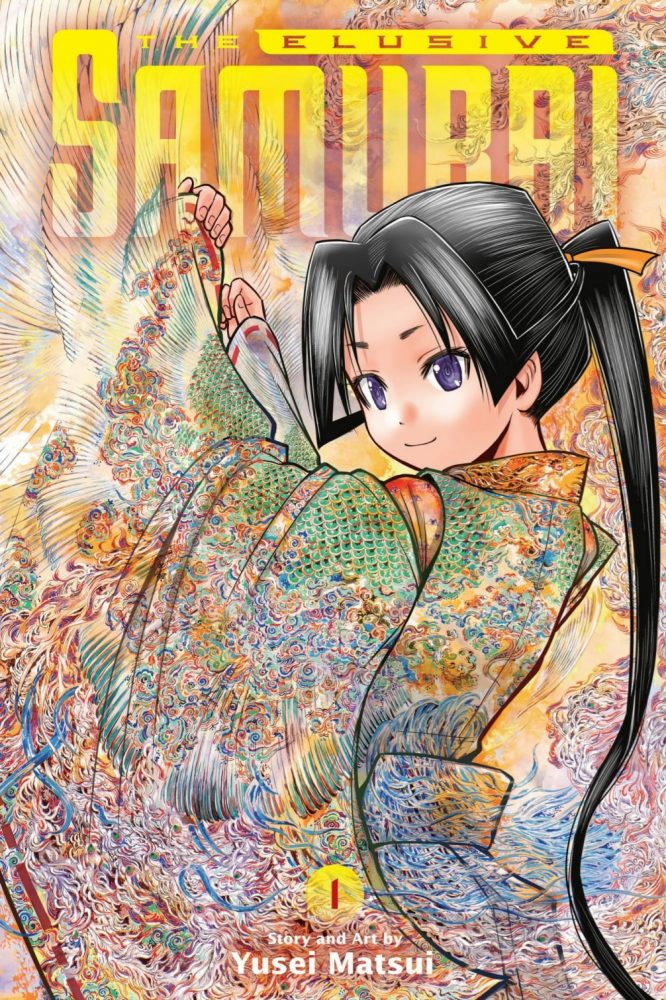
Written and drawn by modern shonen manga legend Yusei Matsui — creator of Assassination Classroom — The Elusive Samurai is a fun and frantic historical manga that begins with the end of Japan’s Kamakura Period. Kicking off in 1333, this shonen manga follows the revenge story of the young lord Hojo Tokiyuki, heir to the Kamakura shogunate, after his family’s retainer betrays and burns the city.
The manga’s first chapter is a heartbreaking introduction to its protagonist, villain, and narrative motivation, as Tokiyuki watches the virtuous man he always admired — Ashikaga Takauji — lead an opposing force to lay waste to his home. What makes Tokiyuki special is his penchant for survival; his almost supernatural ability to evade, run, and hide. By dodging death, he is able to carve a path out and back for revenge and retribution.
This revenge begins with his first fight, with the help of his new comrades, against his betrayer of an uncle; a man who let Tokiyuki’s own brother die. Despite all the backstabbing, death, and trauma, The Elusive Samurai remains a mostly bright and uplifting story about a young boy’s ability to carry on, to ask for help, and to remain on his feet.
It’s a beautifully-drawn modern shonen manga with frequent moments of comedic levity that keep it light and joyous, balancing out the darker historic themes and moments of the manga.
Kingdom by Yasuhisa Hara
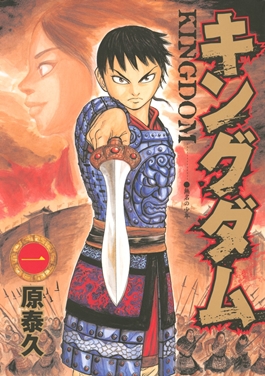
Kingdom is a very long-running historical epic, much like Vinland Saga, but it’s worth pointing out that, if you plan to start at the beginning, the first few volumes can be hard to find in print. Much like Japan, China is a nation that has been at war with itself, originally existing as a collection of warring states. This ended in 221 BCE with Qin Shi Huang, first emperor of unified China.
Kingdom is a historical manga set during the warring states period, and (again like Vinland Saga, features real and iconic people from that time in Chinese history. Our protagonist is Li Xin, a young and impulsive orphan boy who loses his childhood best friend early in the story and then decides to enlist in the army of Qin Shi Huang (though at this time he was still known as Ying Zheng).
Despite the fact that Ying Zheng was actually responsible for Xin’s friend’s death, Xin enlists with the goal of becoming the greatest military general. From here we see Xin rise through the ranks as this long historical epic plays out.
As historical manga go, Kingdom — alongside Vinland Saga and Vagabond — is easily one of the most iconic, and for good reason.
Lone Wolf and Cub by Kazuo Koike and Goseki Kojima
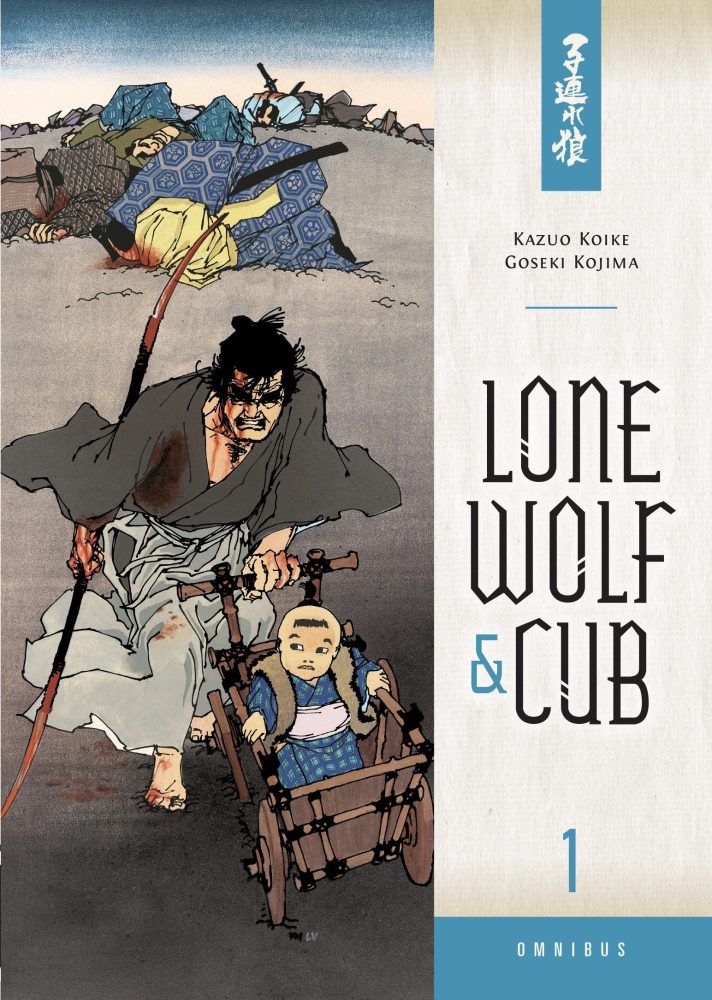
Originally created back in 1970 by writer Kazuo Koike and artist Goseki Kojima, Lone Wolf and Cub is a massively influential historical manga that has been adapted to the screen and the stage. Our titular lone wolf is Ogami Ittō, a former executioner for the shōgun who now works as an assassin after being disgraced by false accusations from the Yagyū clan.
By his side on his path of vengeance is his cub, a three-year-old boy named Daigorō.
Ittō’s former position was one of great honour and privilege, as he helped to perform ritual seppuku on those samurai who had been sentenced to death. However, the Yagyū clan’s leader covets this powerful position and so works to remove Ittō from it.
He does this by slaughtering Ittō’s family, all but his son, and framing Ittō as a wannabe traitor to the shōgun. This setup sends the lone wolf and his cub on a long quest for revenge as Ittō works as an assassin to eventually reach his goal. Few historical manga are as influential and beloved as this one, nor as rich with specific details of Japanese history and samurai tradition.
Read More: Books on Japanese History and Culture
JoJo’s Bizarre Adventure by Hirohiko Araki
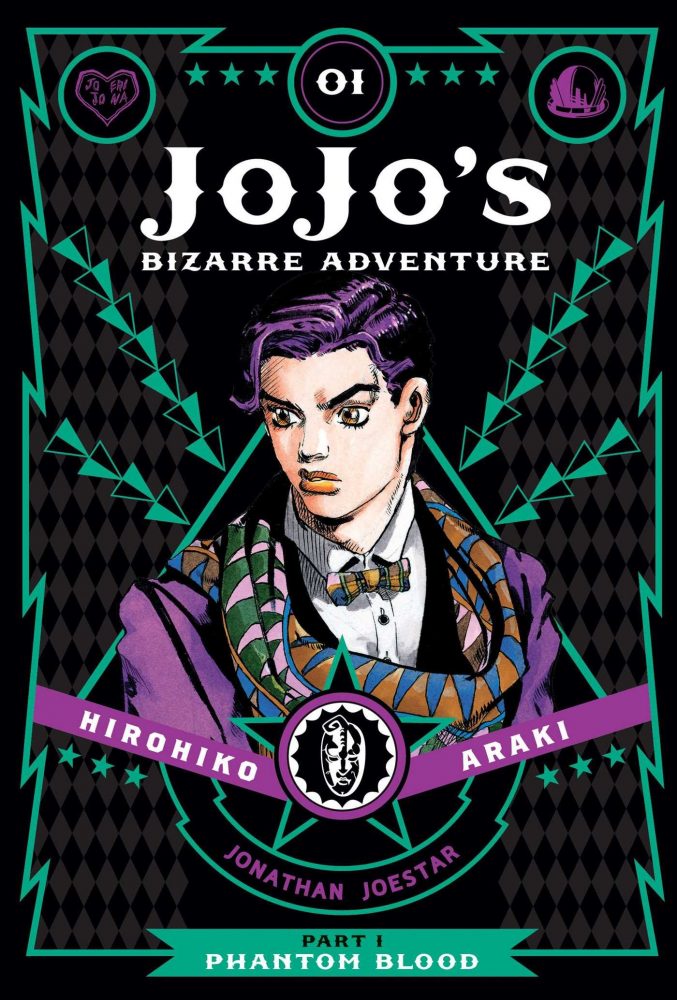
JoJo’s Bizarre Adventure is a cultural giant of a manga. Not everyone is a fan, but those that are have a deep love and obsession with it. Calling JoJo’s Bizarre Adventure a historical manga is a little, well, bizarre, but it is a manga that, for the first few parts at least, is set across different cultures and time periods.
In a tale that feels like the child of Wuthering Heights and Dracula, Part 1: Phantom Blood begins in 19th Century England with the first JoJo: Jonathan Joestar. Jonathan is the son of a wealthy landowner who takes in an orphan boy named Dio Brando, who uses an ancient and magical Aztec stone mask to kill their father and transform himself into a vampire.
To fight against his brother, Jonathan Joestar masters a powerful martial art named Hamon, taught to him by Will A. Zeppeli (characters in JoJo’s are often named after rock and metal bands). Part 2: Battle Tendency follows Jonathan’s grandson Jospeh and takes place across the USA and Europe in the late 1930s, continuing the historical fiction trend.
JoJo’s Bizarre Adventure is a ludicrous thrill ride that is very much loved and hated by fans and detractors. If you’ve never read it, you can only give it a go and see. This is a manga that transcends genre but, for a while at least, remains a very fun and eccentric piece of historical manga.
Black Butler by Yana Toboso
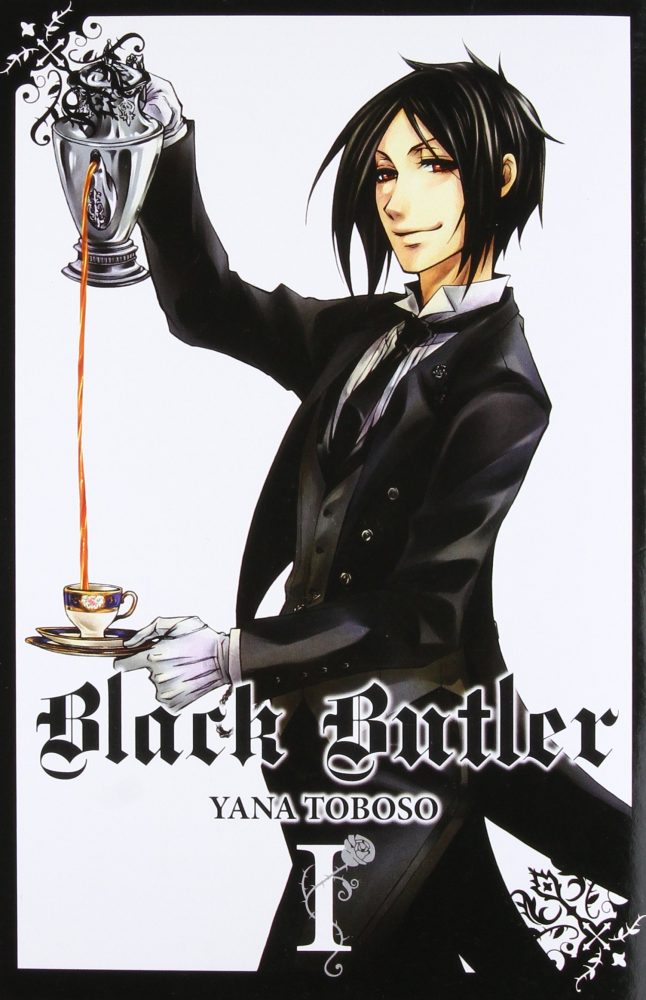
Black Butler is an edgy, dark comedy/drama that is to historical manga what Bridgerton is to historical fiction. Set in 19th Century Victorian London, Black Butler begins with its young protagonist Ciel Phantomhive (real name), suffering a series of tragic losses and traumas.
Ciel’s grand family home is attacked and burned down, his parents dead as a result. He is then kidnapped by a satanic cult who abuse him before attempting to summon a demon. The demon, however, kills the cult on Ciel’s behalf and makes a faustian bargain with him. With the demon’s help, Ciel takes on his father’s former position as Queen Victoria’s watchdog.
With the demon, whom Ciel name’s Sebastian, by his side as his “butler”, Ciel works to take revenge on those who tore his life down at the manga’s outset. When everything eventually comes to an end, Sebastian will take Ciel’s soul as part of their bargain. Black Butler is a ridiculous historical manga full of drama and gothic tropes. Dark, edgy, and funny, it is a very chaotic creature.
Gin Tama by Hideaki Sorachi

Gin Tama might be called the wild card of this list. Set in Edo period Japan, it certainly is a historical manga, but it’s also a sci-fi manga since this particular version of Edo has been invaded by aliens. In this sci-fi/adventure/historical manga, we follow the adventures of “freelance samurai” Gintoki Sakata and the eclectic group of friends and colleagues he collects along the way.
Gin Tama is a mostly episodic manga that succeeds thanks to its ridiculous premise and setting (an alien-controlled Edo is just fantastic), as well as its equally ridiculous protagonists. Gin Tama is a long-running series with an equally impressive anime adaptation, and it is an adventure manga truly beloved by its dedicated fanbase.



